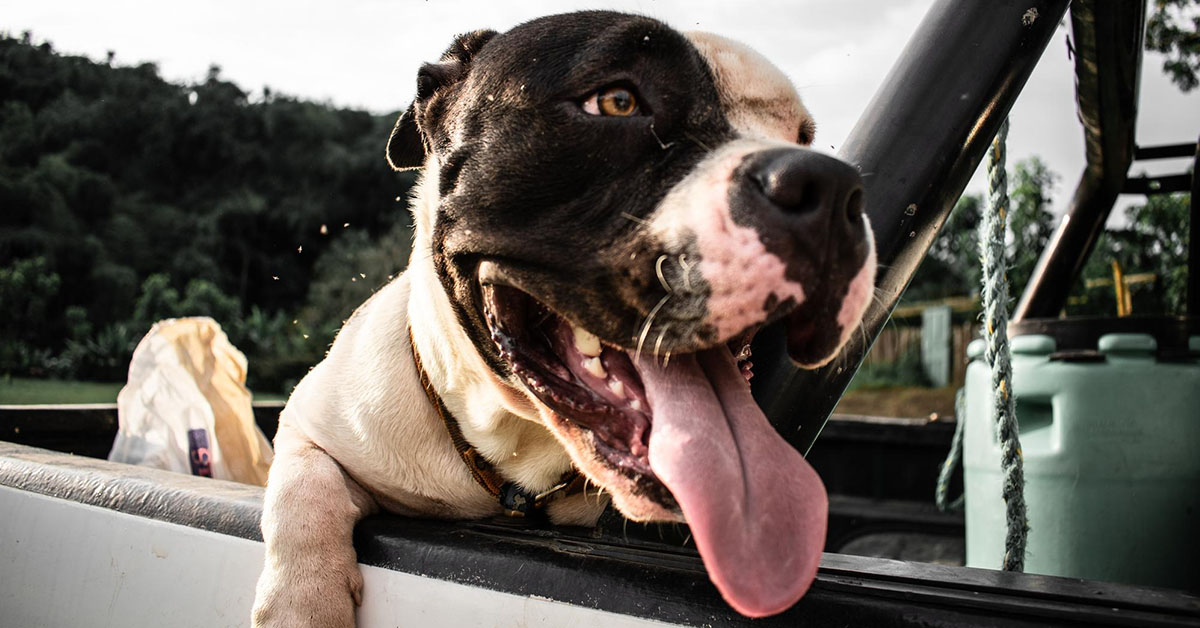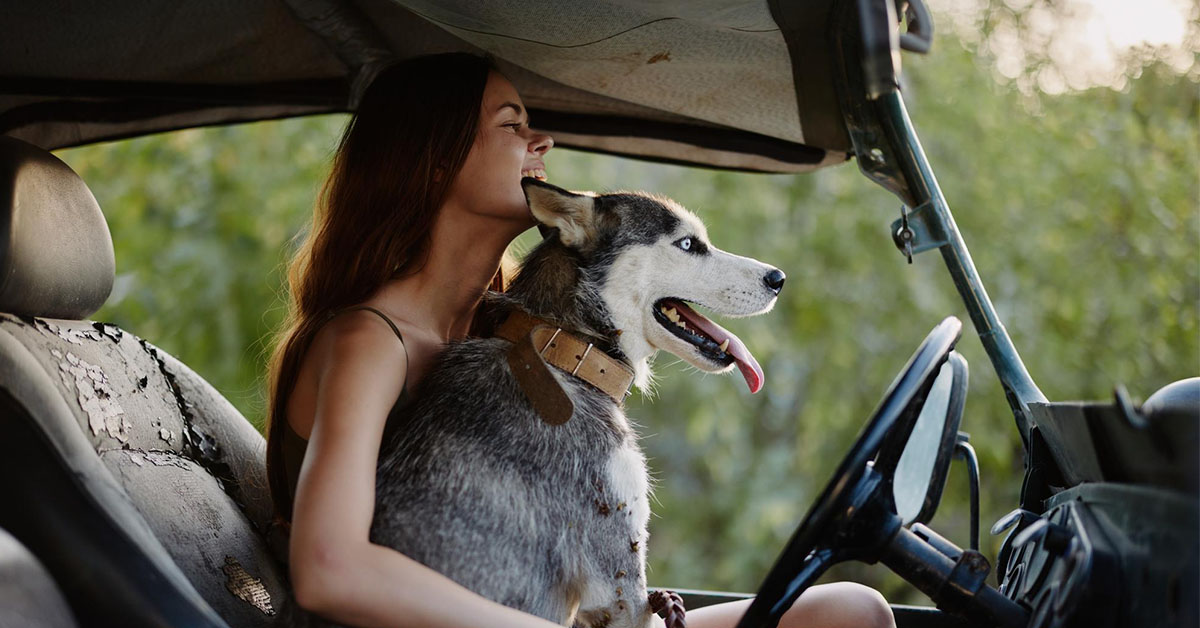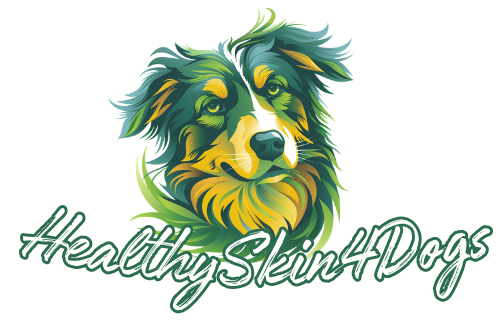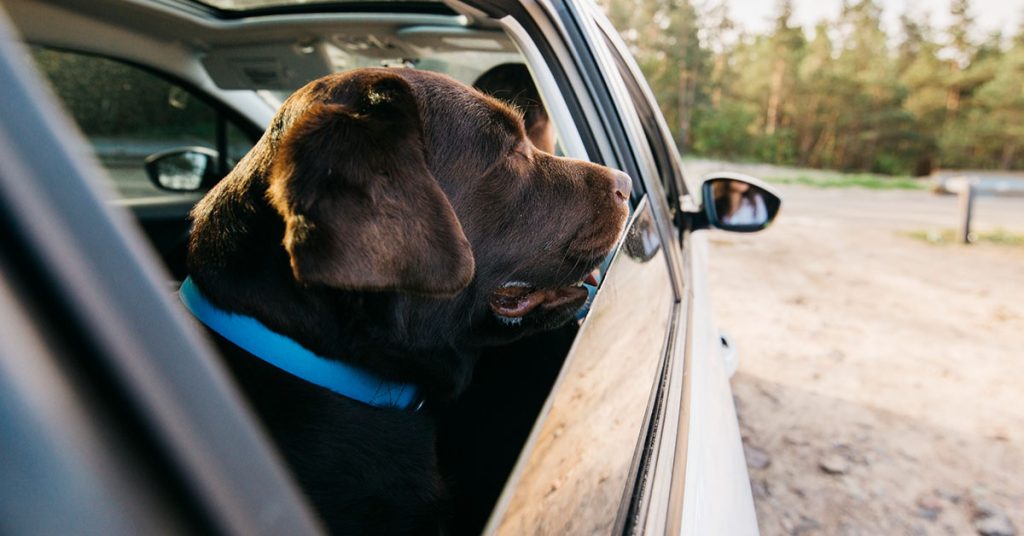Have you ever wondered why your dog slobbers as soon as you drive down the road?? You’re not the only one wondering, “Why does my dog slobber in the car?” This is a common but perplexing issue for dog owners. This blog post will explore the underlying reasons for dogs slobbering in cars and how to manage it. Let’s dive in.
What is Dog Slobbering in the Car?

Many dog owners have experienced dog slobbering in the car, often accompanied by confusion and damp spots on the seats. It involves dogs excessively drooling, panting, or even vomiting while in the car.
Even though it may seem like an inconvenience, it could be a sign of anxiety, motion sickness, excitement, or discomfort. We can better address and mitigate these challenges by unraveling the reasons behind this behavior.
Why Does My Dog Slobber in The Car?
There are several reasons why your dog slobbers in the car. Such as:
Anxiety or Stress
As sensitive creatures, dogs can get anxious or stressed during car rides. Some dogs feel uneasy in unfamiliar environments with the sensation of movement. This anxiety manifests in various ways, including excessive drooling.
In the car, your dog might pant heavily, pace around, or even tremble. Understanding and addressing your dog’s anxiety will help make traveling easier.
Motion Sickness or Nausea
Traveling in a car can also cause motion sickness in dogs. The constant motion and sensory stimuli outside the vehicle can throw off your dog’s equilibrium, causing nausea. As a result, your dog may drool excessively, pant heavily, or even vomit while in the car. Dogs may not enjoy car rides at all if they suffer from motion sickness.
Overexcitement or Anticipation
Dogs are creatures of habit and routine, so they’re often excited about specific activities. A car ride, especially to a favorite destination like the park or the beach, can get your dog all excited. Your dog might drool excessively as he anxiously awaits the next adventure. Managing your dog’s excitement levels can help prevent slobbering in the car.
Poor Ventilation or Uncomfortable Seating
Your dog’s overall well-being needs to have a comfortable and safe environment in the car. Poor ventilation or cramped seating can make your dog feel uncomfortable and anxious.
Overheating can cause your dog to pant excessively and drool in an attempt to cool down. Also, uncomfortable seating positions may cause your dog to feel confined or cramped, causing slobbering. Your dog will feel more comfortable in a well-ventilated and cozy space in the car.
Tooth Decay
Dental caries or cavities are one of the reasons your dog slobber in the car. Dogs can get dental issues that cause discomfort and make them drool a lot. If your dog has tooth decay or other dental problems, they may drool more than usual, especially if they’re in a stressful situation like being in a moving vehicle. Keep your dog’s oral hygiene up with regular brushing and dental checkups to prevent tooth decay and slobbering.
Medication
Some medications and medical conditions can make dogs drool more, including during car rides. Drowsiness or nausea can cause excessive salivation. Furthermore, certain medical conditions, like salivary gland disorders or neurological problems, can cause persistent drooling.
Consult your vet if your dog is on medication or has a pre-existing medical condition to learn how these factors may affect its drooling behavior. Adjusting medication dosages or trying alternative treatments to stop slobbering may be necessary.
Tips to Minimize Dog Slobbering in the Car
It can be challenging to handle a slobbering dog during car rides, but there are several strategies you can employ to minimize this behavior:
Gradual Desensitization
If your dog exhibits anxiety during car rides, gradually acclimate them to the experience through positive reinforcement. Your dog will become more comfortable as you increase the duration and distance of short trips around the block.
Comfortable Seating Arrangements
Provide your dog with a comfortable and secure seating arrangement in the car. Use a well-fitted harness or travel crate to keep them safe and secure during the journey. Ensure adequate ventilation and avoid overcrowding of the space to prevent discomfort.
Frequent Breaks
Take regular breaks during long car rides to allow your dog to stretch their legs, relieve themselves, and hydrate. Short breaks can help alleviate stress and reduce the likelihood of motion sickness or discomfort.
Distractions and Mental Stimulation
Keep your dog engaged and distracted during car rides with interactive toys, treats, or puzzle feeders. Providing mental stimulation can help redirect their focus and reduce anxiety or overexcitement.
Positive Reinforcement

Use positive reinforcement techniques, such as treats, praise, and gentle petting, to reward calm, relaxed behavior in the car. Encourage your dog to associate car rides with positive experiences to help mitigate slobbering and anxiety.
Consultation with a Veterinarian
If your dog slobber continuously, consult your vet to identify any underlying medical problems or explore other treatment options. Vets can give you personalized advice and guidance based on your dog’s needs.
These tips and techniques can help you minimize your dog’s slobbering in the car and create a more enjoyable travel experience.
Read More: Why Do Dogs Pant in the Car?
The Takeaway
It is essential to understand the reasons why your dog slobbers in the car before taking action. Many factors can contribute to slobbering behavior during car rides, including anxiety and motion sickness. With practical strategies and advice from your veterinarian, if needed, you can make your journey with your furry friend more enjoyable.
Eventually, you’ll discover how to minimize slobbering and ensure that car rides are stress-free and pleasant for your dog.




